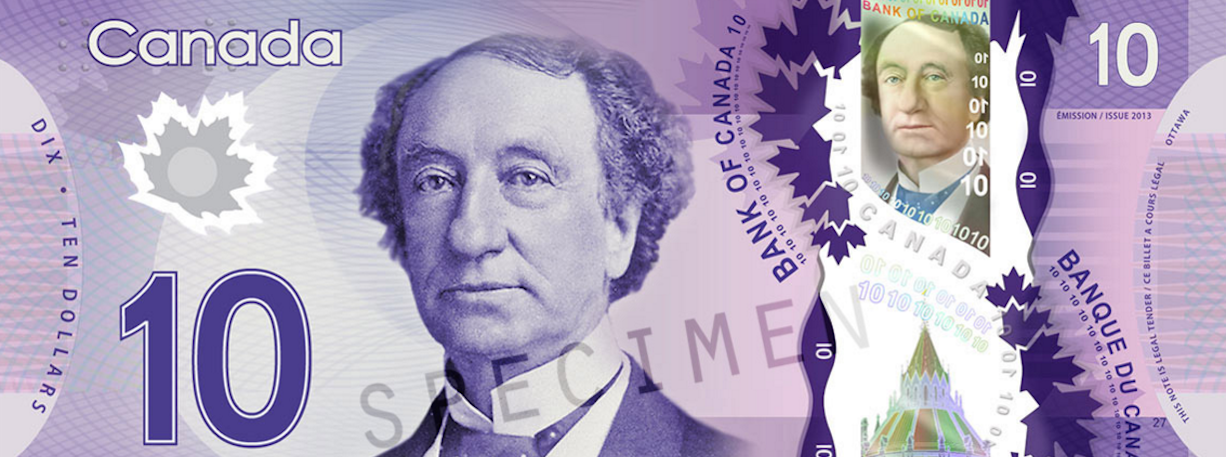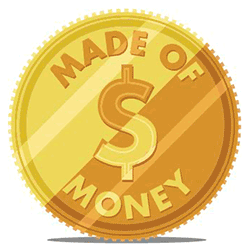

Last year I pushed a US $10 bill across a deli counter to pay for my lunch, only to have it pushed back at me. “It’s fake,” the cashier told me flatly. Heat rising to my cheeks, I fumbled for my debit card. Why was it that I was the one feeling badly–when I was the victim (not the perpetrator) of fraud?
Back at my desk, I put the ersatz bill under a magnifying glass. Up close I could tell it was fake. The “10” nestled on the bill’s lower right corner failed to shift from copper to green when I angled it against the light; the microprinting was mottled. If I had actually looked at it when I was originally handed the bill, I would have noticed there was no security thread or watermark. If I had been more alert, I’d never have been slipped the fake $10 in the first place. Of course, counterfeiters bank on the fact that we don’t pay attention.
A Google search led me to the Secret Service–the U.S. bureau tasked with investigating counterfeit currency, something it’s been doing far longer than it has been protecting presidents. “This happens all of the time; they just print them on inkjet printers using fancy paper,” said the Secret Service agent I called to find out what to do with the bill. I knew I couldn’t spend it, and tossing it out somehow seemed wrong.

You need money to make money. Or at least that used to be the case: high-quality paper, plates, inks, a printing press, and a place where the noise from the press would go relatively unnoticed. These days, thanks to cheap high-resolution scanners and quality inkjet printers, anyone with some chutzpah–counterfeiting gets you up to 15 years in federal prison–can print money. It also means that faking bills that wouldn’t have been worth it in the past–$5’s and $10’s–has become more common, according to the Secret Service agent I spoke to.
In 2007, Iowa teens were caught forging bills as little as a dollar. Others are taking small bills and turning them into big ones. In 2014, a part-time hairstylist and janitor took $5 bills and removed their ink with a cheap degreaser. Once they dried, she printed 50’s and 100’s on the now blank sheets using a common 3-in-1 printer. Earlier this year a South Texas man used EASY-OFF Oven Cleaner to bleach his low-denomination bills.
“I don’t understand why the U.S. hasn’t gone to polymer,” said David Henry Solomon, a professor in the Department of Chemical and Biomolecular Engineering at the University of Melbourne. Australia is without question the pioneer in the world of plastic cash, and Dr. Solomon was part of the team that helped develop the technology and introduce polymer notes to the country–back in 1988.
Australia issued the world’s first full series of plastic notes, an innovation in currency manufacturing that’s now almost 30 years old, in an effort to stay a step ahead of counterfeiters. The flexible bills look more or less like the paper currency we’ve known for centuries, but they’re fabricated from plastic polymers. They’re still bendable, have some spring to them, and smell a bit like maple syrup. Texturally, the notes feel like a very smooth version of the Tyvek mailers FedEx and UPS use. Visually, they look futuristic because of their clear panels. They also last longer than paper–they can easily survive a run through the wash, for instance–and are more hygienic. Perhaps most importantly, though, they’re harder to copy.
Plastic cash isn’t just in Australia, either. In 2011 Canada began the switch to polymer currency amid its own counterfeiting struggles. The United Kingdom announced it was following suit in 2013, as did Brunei, Vietnam, New Zealand, and Papua New Guinea. “More than 30 countries have switched to polymer currency,” said Dr. Solomon.
The United States and the Eurozone remain, however, firmly attached to paper money. Why?
Dr. Solomon floated two reasons. The first is simply that money is a conservative industry. “If you’d asked me when I first started on this if I was prepared to [spend] 20 years to get the first note, I’d have stopped working,” he said with a laugh. It took his team longer than that to research and prototype Australia’s first polymer note. It took another 20 years to achieve broader adoption.
The second reason is the “NIH sector”–short for “Not Invented Here,” said Dr. Solomon. Simply put, countries are less willing to adopt a foreign technology in an area as sensitive as money creation.
A third possible reason is related: Right now the United States manufactures most of the world’s paper money. Small countries lack the facilities and the infrastructure to securely make paper notes, so America does it for them–for a price. Making foreign currency is domestic, big business. Likewise, for those that have switched to polymer Australia either prints the currency directly for them or countries (Mexico is one) print their own using Australian technology–while paying Australian licensing fees.
Even polymer money isn’t free from forgery. Although Canada has experienced a marked reduction in counterfeiting since making the switch, it was less than two years before the first batch of incredibly realistic, incredibly fake plastic banknotes appeared in circulation. More recently, Australia has found itself awash in fake $50 (Australian) bills good enough to fool banks. More than 33,000 such bills had been seized between 2014″”2015. Solomon was quick to point out, however, that at least some of those Australian bills were actually paper. People have gotten so confident in the security of their money that if it was the right color, they didn’t look too closely.
Still, while clearly not impossible, counterfeiting polymer bills is difficult. The process involves finding an appropriate plastic substrate, layering on white paint everywhere but the location of the clear plastic panel, and then printing on top of that. Good fakes also require finding a way to laser-etch an image into the plastic panel. In total the process is so complex that it’s why counterfeiting has mostly been limited to big bills–$100’s in the case of Canada and $50’s in the case of Australia. Whether polymer cash represents a permanent slowdown in counterfeiting efforts or merely an interregnum remains to be seen. In 10 or 15 years, will casual counterfeiters print polymer cash from home the way some are currently printing paper?
The current limitation is on counterfeiters’ ability to get the substrate, and print convincingly realistic bills. But that won’t necessarily be true forever. Home inkjet printers have shown themselves to be remarkably hackable–they can even print circuit boards. And laser engravers have moved from industrial settings to the craft room. This is why Australia will begin releasing a new line of polymer notes with updated security features at the end of this year and into next. For those in the polymer game, halting fakery is less about building a better mouse trip and more about sealing your home so rodents can’t enter in the first place.
“It’s a game,” said Solomon, “You always have to get ahead, you have to keep adding security features. All polymer money did was give us more options–you can see through it, you can start using different optical effects.”

This brings up the question, why use physical money at all? With the advent of cashless payments, ranging from credit cards to Bitcoin to mobile banking in developing economies, we tend to think of cash as near obsolete technology.
“There were two big events where they had to have money,” said Dr. Solomon. “When the Japanese Tsunami and Hurricane Katrina happened, all of the electronic systems went down “¦ society didn’t work. They had to inject massive amounts of cash.” Similarly, on a recent podcast comedian Baratunde Thurston noted that on a trip to Greece last fall a hotel guest tried to pay with credit card only to have the proprietor tell him, “You know we are struggling here. You know our banks don’t work. You paying me with a credit card is like you not paying me at all. Can you please, please try to find some cash?”
As long as we have cash, we’ll have counterfeiters. Unless we, the cash-carrying consumer, actually pays attention. “We’re given a handful of change at the store, or a stack of bills at the bank, and in our rush we shove it in wallets without ever pausing to worry if the bill is real,” said Dr. Solomon.
Maybe the war against forgery starts right there.


How We Get To Next was a magazine that explored the future of science, technology, and culture from 2014 to 2019. This article is part of our Made of Money section, which covers the future of cash, finance, economics, and trade. Click the logo to read more.
